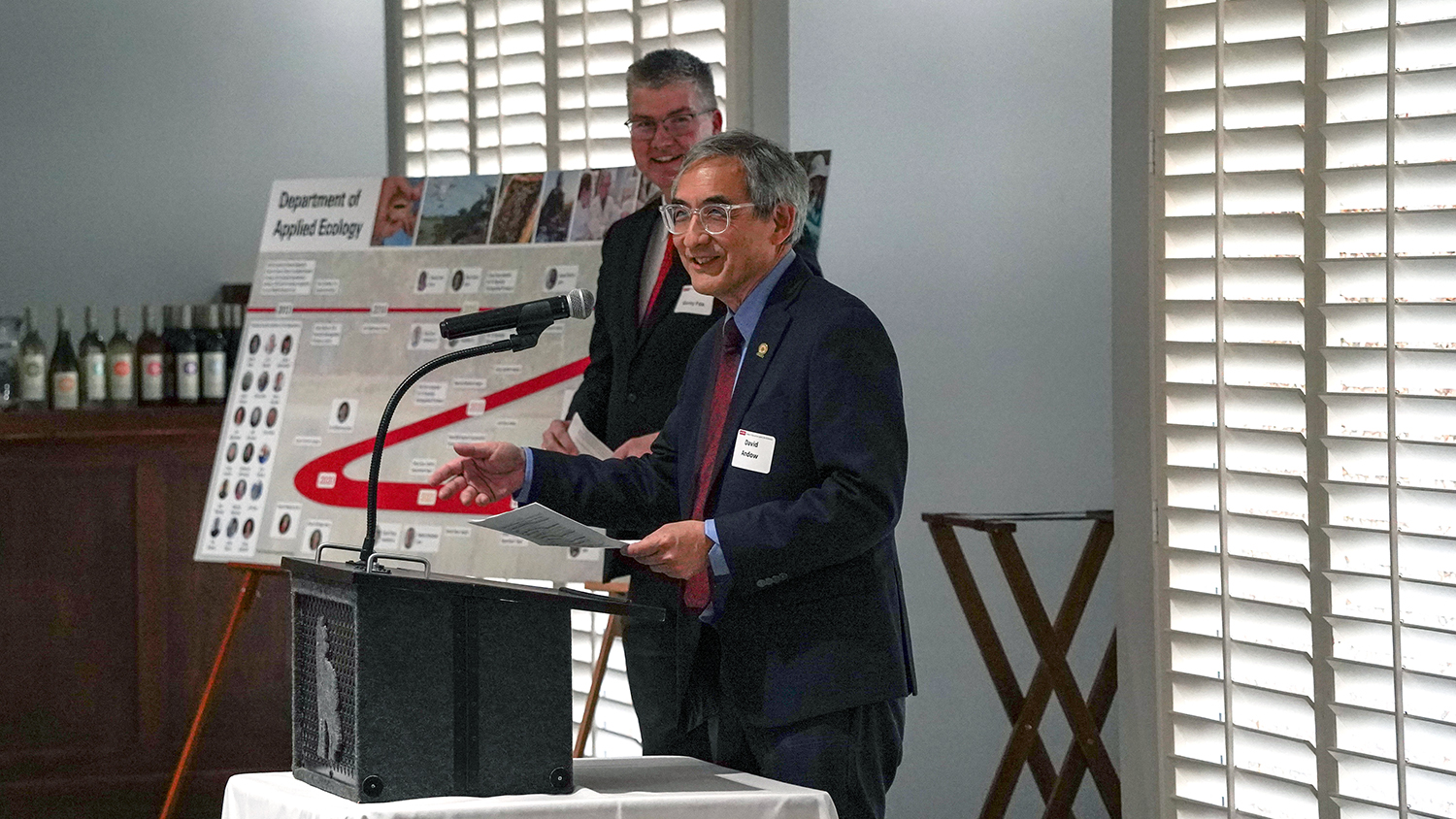The world of water
A symposium looks at ‘The Future of Water in a Green World’
Arguably, no group suffered more during the drought of 2007-2008 in North Carolina than those businesses collectively referred to as the “green industry.”
The drought was the worst in the state’s recorded history, and as North Carolina became more and more parched, local governments restricted water use. Those restrictions limited activities like irrigating landscapes, and companies that provide landscaping services or sell plants saw their business literally dry up. It was a frustrating time both for the industry and for research and Extension personnel in the College of Agriculture and Life Sciences who work with the industry.
CALS researchers and Extension specialists and agents are used to being able to make a difference, to suggesting options that will control problems such as insects or diseases or agronomic practices that increase efficiency and productivity. While Extension specialists and agents worked during the drought to educate the public and suggest ways to deal with the lack of moisture, drought is a difficult opponent, and there was little they could do that had a measurable impact.
Since those dark days, the green industry has worked to educate the public and members of the industry about the importance of water and ways to manage this precious resource.
CALS, of course, continues to work with the industry, and that partnership was on display during an Aug. 2 symposium at McKimmon Center on the North Carolina State University campus titled The Future of Water in a Green World. The symposium was organized by the North Carolina Green Industry Council and the College of Agriculture and Life Sciences was a major sponsor.
Dr. Tom Rufty, Bayer Crop Science Distinguished Professor of Sustainability, was one of two keynote speakers at the day-long symposium, while three other CALS faculty members gave presentations.

Rufty pointed out that the green industry is a vital economic engine in North Carolina, worth around $9 billion annually, and that the availability of water will likely continue to be a challenge. He said climate change is likely to impact that availability.
Innovation and public education, Rufty added, are key to dealing with the availability of water in the future. Innovation such as new irrigation technology and landscape design that features more drought tolerant plants will aid in dealing with water availability, as will educational programs that persuade the public to adopt innovation.
CALS faculty members also touched on innovation during their presentation.
Dr. Mike Hoover, soil science professor and Extension soil specialist, talked about the need for for what he called “decentralized water reuse.” Hoover said North Carolina needs to make it easier, particularly for residential water users, to reuse water for activities such as flushing toilets and irrigating landscapes rather than using drinking water for these purposes, as is now the case.
Dr. Garry Grabow, associate professor and Extension specialist in Biological and Agricultural Engineering, talked about his research with so-called smart irrigation control systems. These systems are designed to irrigate landscapes only when moisture is needed, not on a predetermined schedule. Grabow is evaluating these systems, looking at how they may be used most effectively.
Dr. Barbara Fair, assistant professor and landscape Extension specialist, talked about the benefits and economic value of healthy, well-maintained and designed landscapes.
The symposium began and ended with keynote addresses. While Rufty’s presentation ended the conference, it began with a presentation by Charles Fishman, author of the “The Big Thirst,” a book about water and efforts around the world to deal with water shortages.
Fishman said the world is entering an era of water shortage, but was generally optimistic about efforts to deal with shortages. He pointed out that technologies and strategies for dealing with water shortages are available and that solutions for dealing with water availability tend to be local in the sense that it is unlikely that a successful strategy to deal with a regional water shortage will be affected by events in other parts of the world, as is the case with economic problems.
“Solutions (that deal with water availability) are often right at our fingertips,” Fishman said.
Written by: Dave Caldwell, 919.513.3127 or dave_caldwell@ncsu.edu



Very useful article to learn a very important topic majority of people not gave importance to water but we should realize this precious resource and think seriously on this matter and use water carefully.